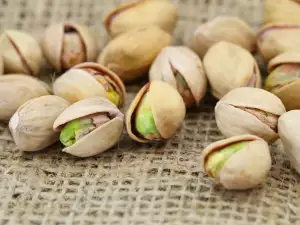Salsify is a root vegetable belonging to the dandelion family. In appearance it is similar to parsnip - with creamy white flesh and thick skin.
Like many root vegetables, it can be boiled, pureed, used for various soups and dishes. It is also called the oyster plant, because it tastes like this seafood delicacy, when it's cooked. It grows in southern Europe and the Middle East, but its true point of origin is believed to be in Spain.
Salsify contains as much potassium as bananas and is one of the best dietary sources of inulin, a form of prebiotic fiber that contributes to digestive health. It reduces constipation, relieves intestinal discomfort and prevents more serious conditions, ulcers. It is low in sodium and offers a good amount of protein.
High potassium (15% of daily recommended amount per serving) and low sodium mean that salsify can significantly improve blood pressure problems by relaxing blood vessels, reducing stress on the cardiovascular system and preventing the chances of blood clots, heart attacks and strokes.

Potassium is also a key element for building strong bones and has even been praised for its ability to increase cognitive abilities, probably due to increased blood flow to the brain. The root contains modest amounts of vitamin C, some vitamin B and is a good source of complex carbohydrates. This vegetable contains a large amount of honey, which contributes to healthy and beautiful hair.
Until the 1500s, salsify was considered effective in treating plague.
Salsify root has decent amounts of fiber, vitamin C, vitamin B6, folic acid, potassium and manganese. It even has a little protein, calcium and iron. Some of the health benefits of root include its ability to lower blood pressure, stimulate the immune system, stimulate hair growth, increase blood circulation, improve the many elements of the digestive system, increase the metabolism and affect positive bone mineral density.

High levels of magnesium, phosphorus, calcium, copper, iron and manganese form a strong mineral base for the development of bone tissue. With sufficient bone mineral density, you can prevent the development of common age-related diseases, such as osteoporosis and even arthritis, which can occur when bones begin to break down and connective tissue (collagen) no longer maintains integrity of your joints.
This ugly-looking root compensates for its unspleasant appearance with nutritional and taste qualities. It deserves to take a worthy place on your table and enrich it.




















Comments